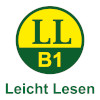Musik-Experimente
Tischbeschreibung
Auf dem Tisch mit den Musik-Experimenten gibt es vier Stationen zum Ausprobieren. Direkt vor dir steht eine Box, in der eine Chladnische Klangfigur erzeugt werden kann. Rechts neben der Box kannst du diese Figur auch ertasten. Auf der Tischseite gegenüber gibt es noch eine zweite Box mit einer Chladnischen Klangfigur. Dort kannst du die Figur links neben der Box ertasten. Rechts von dir gibt es eine Station mit vier Stimmgabeln und auf deiner linken Seite befindet sich eine liegende Gitarre, mit der du stehende Wellen erzeugen kannst.
Spielerklärung
Chladnische Klangfigur:
In der Box steckt eine kleine Schaufel. Mit der Schaufel kannst du feinen Gries auf eine Metallplatte schaufeln. Alles ist hinter Plexiglas geschützt. D. h. du kannst nichts danebenschütten.
Drücke danach auf den Knopf rechts neben der Box. So aktivierst du die Platte und sie vibriert. Mit dem Drehknopf direkt vorne auf der Box kannst du die verschieden hohen Frequenzen einstellen. So bringst du die Platte zum Schwingen und unterschiedliche Figuren entstehen.
Stimmgabeln:
Vor dir stehen vier Stimmgabeln. In der Mitte der Stimmgabeln hängt ein Schlägel. Damit kannst du eine Stimmgabel anschlagen. Berühre dann die Stimmgabel ganz vorsichtig mit den Fingern. Du spürst die Vibration.
Stehende Welle:
Vor dir liegt eine Gitarre. Sie ist auf der Tischplatte befestigt. In der Mitte des Gitarrenhalses kannst du eine kleine Kurbel andrehen. Zupfe dann an den Saiten der Gitarre. Auf der Grafik auf der Kurbel siehst du die Wellenbewegung der Saiten.
Informationen zum Inhalt
CHLADNISCHE KLANGFIGUR
Versetzt man die Platte in Schwingung, entstehen stehende Wellen. An den Knoten der Welle bleibt die Platte ruhig. Es sammelt sich der Sand. Wo die Platte vibriert, wird der Sand weggeschüttelt. Das Muster hängt von vielen Faktoren ab. Zum Beispiel von der Form der Platte, oder wo sie fixiert ist.
STEHENDE WELLE
Wenn sich hinlaufende und reflektierte Wellen überlagern, kann es passieren, dass sie sich sozusagen gegenseitig ausbremsen – es entsteht eine stehende Welle.
STIMMGABEL
Winzige Luftbewegungen breiten sich zwischen den Zinken der Stimmgabel als Schallwellen aus, die man ganz leise hören oder spüren kann.
Music Experiments
Table description
On the table with the music experiments there are four stations to try out. Directly in front of you is a box in which you can create a Chladni figure. To the right of the box you can also feel this figure. On the opposite side of the table there is a second box with a Chladni figure. There you can feel the figure to the left of the box. On your right there is a station with four tuning forks and on your left there is a lying guitar with which you can create standing waves.
Playing explanation
Chladni sound figure:
There is a small shovel in the box. With the shovel you can put fine grit onto a metal plate. Everything is protected behind Plexiglas. That means you can’t spill anything.
Then press the button to the right of the box. This activates the plate and it vibrates. With the knob on the front of the box you can set the different high frequencies. This is how you make the plate vibrate and create different figures.
Tuning forks:
There are four tuning forks in front of you. A mallet is hanging in the middle of the tuning forks. You can strike a tuning fork with it. Then touch the tuning fork very carefully with your fingers. You will feel the vibration.
Standing wave:
In front of you is a guitar. It is fixed to the tabletop. In the middle of the guitar neck you can turn a small crank. Then pluck the strings of the guitar. On the graphic on the crank you can see the wave movement of the strings.
Content Information
CHLADNI FIGURE
If the plate vibrates, standing waves are created. The plate does not vibrate at the wave nodes. Here, sand collects. The sand is shaken off where the plate vibrates. The pattern depends on many factors. This includes the shape of the plate or where it is fixed.
STANDING WAVE
If incident and reflected waves are superposed, they can cancel each other out, creating a standing wave.
TUNING FORK
Tiny air movements are spread between the prongs of the tuning fork as sound waves that can only be heard or felt very faintly.




